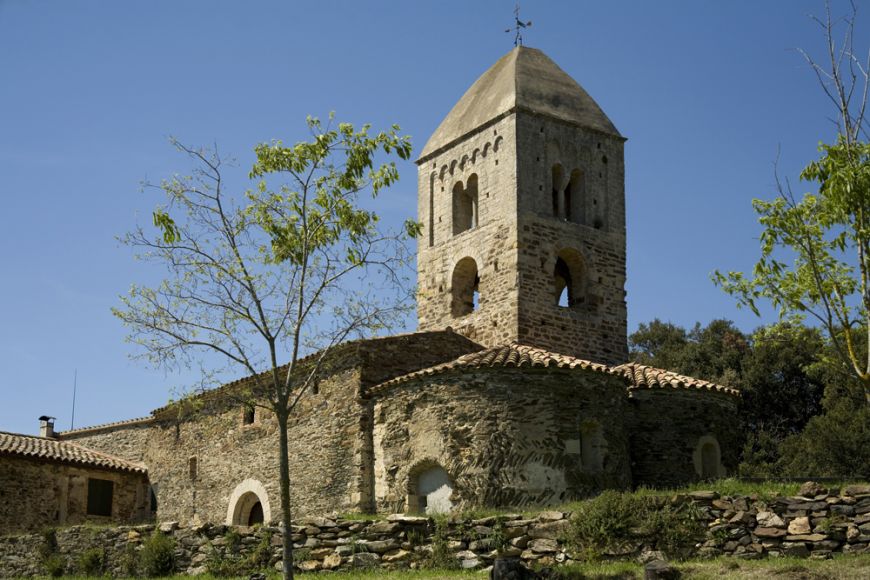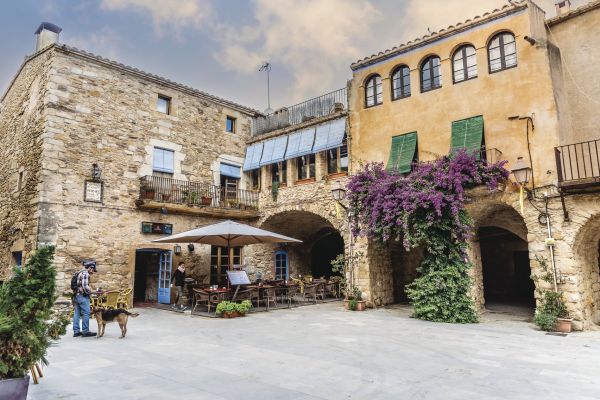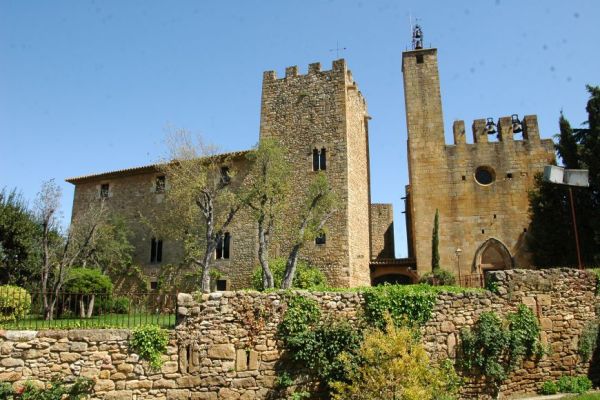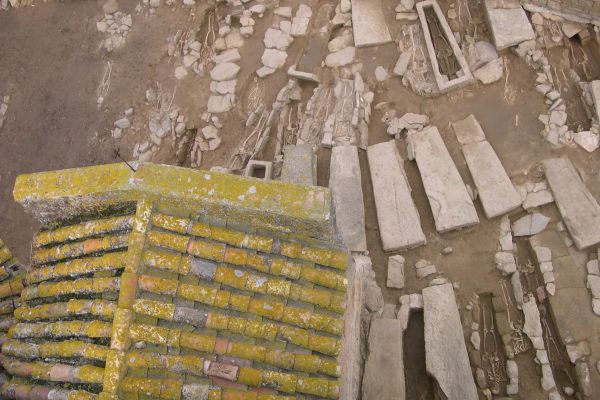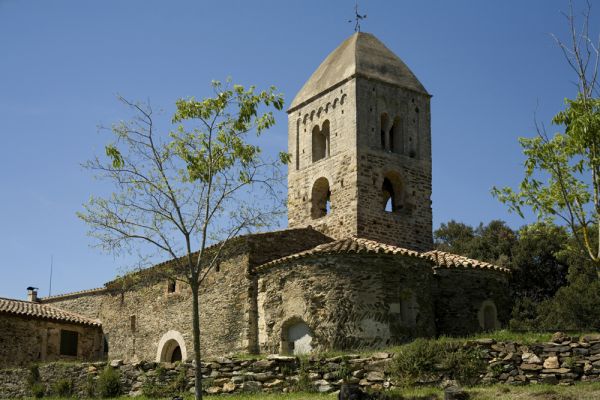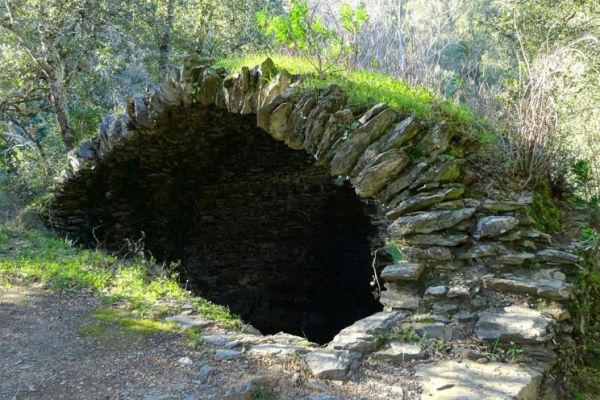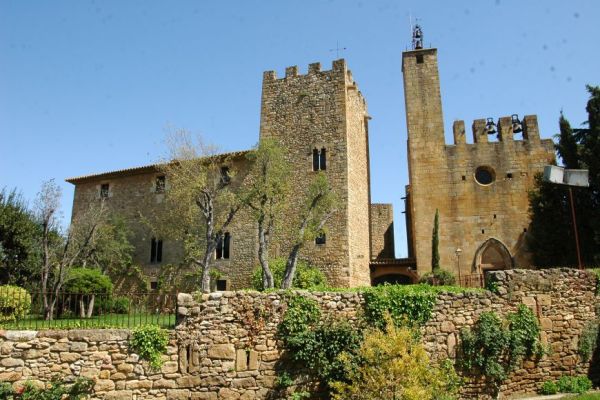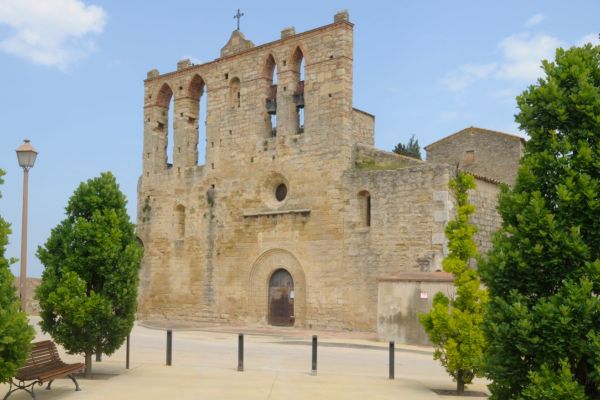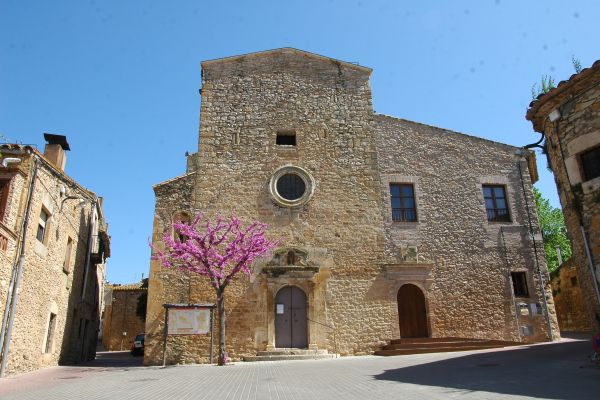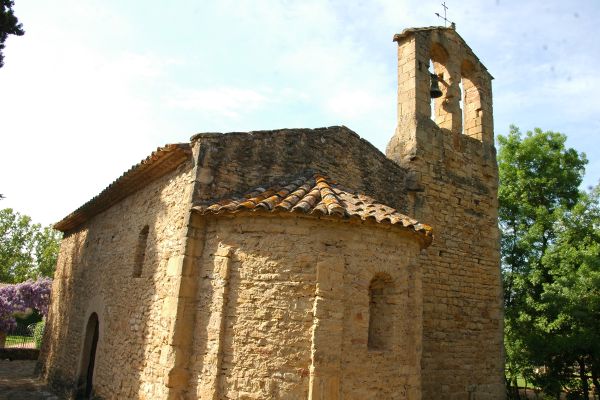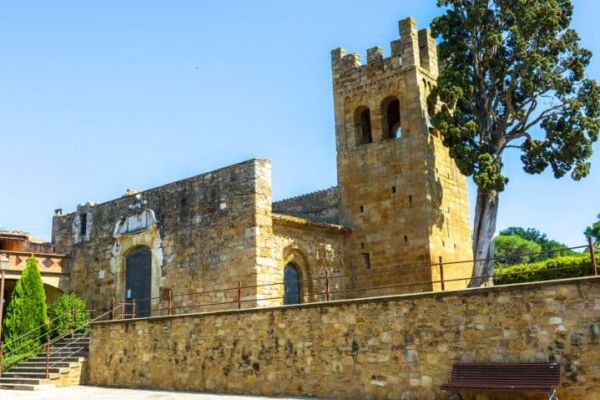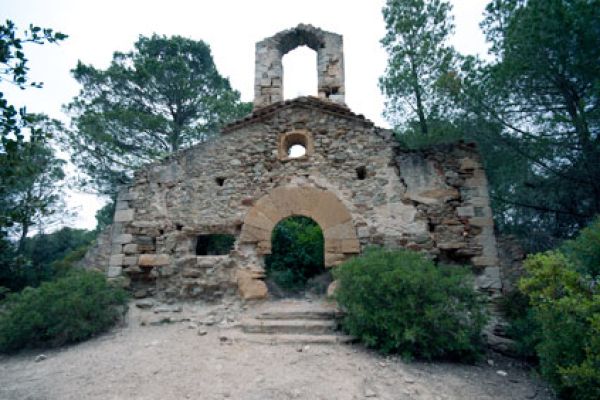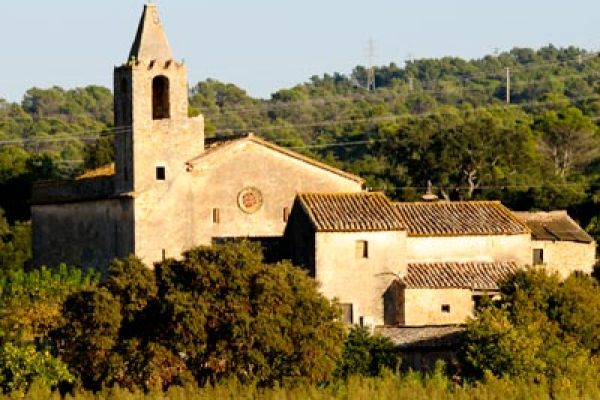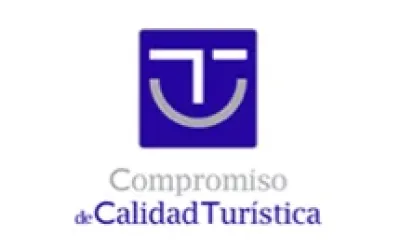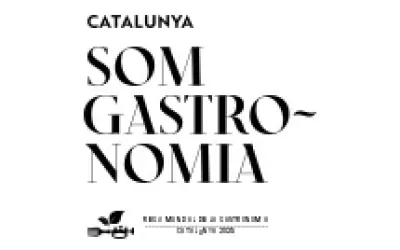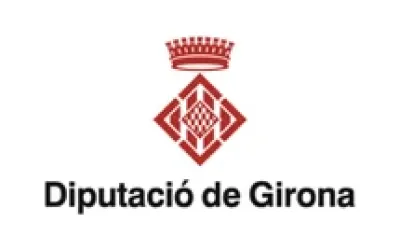This is one of the jewels of the Gavarres massif. It is a Romanesque church, which stands majestic on a small plain that appears in the ridge formed by Puig d'Arriells and Puig Gros. The most singular and characteristic element of the building is its great bell tower, visible from most of the massif. It has a rectangular floor plan, with openings on all the three floors and a pyramidal roof covering four slopes.
The openings on the upper floor are twin windows, with rounded arches, circular crossbones and trapezoidal capitals. This floor, which has been re-created, differs from the lower one, in terms of the era and constructive technique. Its vertical wall is made from sealed and polished ashlars with calcareous stone of regular dimensions, without oversized pieces on the edges.
The Lombard influence of Catalan Romanesque is presented in the decoration of the windows on the upper floor of the bell tower, with an arcade frieze. Together with the rectory and the cemetery, it forms a small isolated ensemble.
It has two naves covered by two semicircular apses. It seems that the oldest one is at the front, the apse of which has an apparatus in the form of a spike and the nave has the remains of Romanesque mural paintings. The pointed vault is at the rear. On the threshold of the entrance to the church is the tombstone of the rector who died in 1817, at the hands of bandits who plundered the church. It can be read, in non-academic Latin, how he died.
The act of consecration
In 1989 a copy of the endowment text or the act of consecration of the church was discovered in the Capitular Archive of Girona, which Guillem Molas made in the 18th century. Thanks to this document, we know that on 29 January 948, Bishop Gotmar of Girona came to Fitor to consecrate the church, which had been built by the presbyter Altimir and the Levites Placià and Tassi, with the help of all the faithful. The new church was given, as it was the custom, a diversity of elements from different people. The donations consisted of land, vineyards and "mountains".

